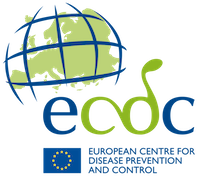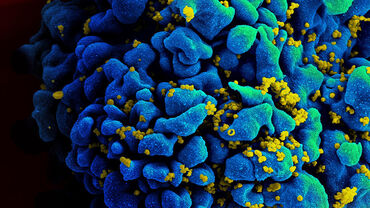Progress towards reaching the Sustainable Development Goal 3.3 related to HIV, TB, viral hepatitis and sexually transmitted infections in the EU/EEA
This report provides an update on progress towards the Sustainable Development Goal Target (SDG) 3.3 and other main global and regional targets for eliminating HIV, viral hepatitis, tuberculosis (TB) and sexually transmitted infections (STIs) as public health threats. These infections disproportionately affect similar population groups and are preventable with the application of evidence-based interventions for prevention and control. Based on monitoring and surveillance data reported to ECDC or made available by partner agencies for the 30 European Union/European Economic Area (EU/EEA) countries, this report explores five themes and assesses progress toward the set targets for each disease area in terms of incidence, prevention, testing and treatment and mortality.
Executive summary
Incidence
Modelled incidence estimates suggest that new HIV infections in the EU/EEA declined by 35%, from 26 000 (5.9 per 100 000 population) in 2010 to 17 000 (3.8 per 100 000) in 2023, and incident TB cases declined by 35%, from 13.1 per 100 000 population (59 000 cases) in 2015 to 8.5 (39 000 cases) in 2023. While substantial progress has been made for both disease areas, neither are on track to meet the interim 2025 target of a 75% reduction in HIV incidence from a 2010 baseline, and a 50% reduction in TB incidence from a 2015 baseline.
Data are not currently available to measure progress towards the impact target for the incidence of chronic hepatitis B and C, however surveillance data show increased diagnoses of acute hepatitis B. Similarly, incidence estimates are not available for STIs, however, surveillance data on new syphilis and gonorrhoea diagnoses indicate that incident cases are increasing in the EU/EEA.
Prevention
The implementation of prevention measures is progressing across the region, yet progress is below targets for all indicators. By the end of 2023, 160 000 people in the EU/EEA were reported to have used pre-exposure prophylaxis (PrEP) to prevent HIV acquisition, 30 000 more than in 2022. However, there are no data available on the number of people potentially at risk of HIV acquisition, making it difficult to assess the extent to which those most in need of PrEP are actually receiving it. With regard to the prevention of HIV, hepatitis B virus (HBV) and hepatitis C virus (HCV) transmission through the sharing of contaminated needles, five countries had reached the WHO target of
distributing 200 needles and syringes per year per person who injects drugs, and fifteen had reached the target of 40% of opioid users receiving opioid agonist treatment. For HBV, 11 countries met the 95% target for childhood HBV vaccination coverage. No data were available to assess progress related to TB preventive treatment coverage among people living with HIV and children aged <5 years who are household contacts of people with TB, with the exception of seven countries that had data on childhood TB contacts, six of which had met the 90% coverage target.
Testing
For HIV testing, 92% of the estimated number of people living with HIV had been diagnosed. In 2023, 94% of the 39 000 estimated TB disease cases (new and relapse) in the EU/EEA were diagnosed and notified, indicating that the 2025 case detection target of 85% was met. For hepatitis B, only four countries had data available to report on progress towards the WHO target of at least 60% of people with chronic hepatitis being diagnosed by 2025, with only four countries also having this data for hepatitis C. For HBV, none of the four countries had met the target, while three had met it for HCV. This suggests that the EU/EEA countries are falling behind considerably for this target. There are currently no data available on the percentage of priority populations tested for syphilis and gonorrhea.
Treatment
For HIV treatment, 93% of those diagnosed received antiretroviral therapy (ART) and 93% of those on treatment had suppressed HIV viral loads (and therefore could not pass on the virus). While the EU/EEA as a whole may be on track to reach the 95% treatment targets for HIV, progress varies substantially by country. For TB, despite the EU/EEA having met the TB case-detection rate target early, only 68% of those starting TB treatment, for whom a treatment outcome was reported in 2022, successfully completed treatment. This indicates that the EU/EEA is falling short of the 90% treatment success target. For HBV and HCV treatment, of the four countries with available data, none met the WHO goal of 50% of people with chronic HBV receiving treatment and 50% of those with HCV being cured. There are currently no data available on the percentage of priority populations diagnosed with syphilis and gonorrhea who were treated.
Mortality
The number of people dying from AIDS-related causes declined by 30%, from 4 700 (1.1 per 100 000 population) in 2010 to 3 300 (0.7 per 100 000 population) in 2023, however this declining trend is not on track to achieve a 50% reduction by 2025. The estimated number of TB deaths declined by 15%, from 4 200 (0.9 per 100 000 population) in 2015 to 3 550 (0.8 per 100 000) in 2023, remaining well below the 75% reduction target for 2025. There were significantly more deaths due to hepatitis B and C than AIDS-related deaths and TB deaths
(an estimated 50 500 deaths across the EU in 2021). Although there continues to be an increase in the number of liver cancer deaths due to hepatitis, trends in overall hepatitis-related deaths have remained stable over the past decade, with no progress toward the 2025 target of reducing deaths by 35% from a 2020 baseline. STI-related mortality is not covered in this report.
Conclusions
There has been steady, but uneven progress towards the SDG targets across the EU/EEA, with only a few of the 2025 targets being met.
- Estimated HIV incidence has declined by 35% since 2010 but is still below the 2025 target of 75% reduction. Estimated TB incidence has decreased by 35% since 2015 but also remains below the 2025 target of 50% reduction. Although there is a lack of data available to inform on progress towards reducing new infections of chronic hepatitis B and C and STIs, new diagnoses of gonorrhoea, syphilis, and
acute hepatitis B have increased over the period, thereby falling short of reduction targets. - For HIV, the progress toward testing and treatment targets is evident and some countries have achieved the targets. Nevertheless, one in five of all people living with HIV in the EU/EEA were living with transmissible levels of virus. TB data indicate that testing and diagnostic activities are working well as the case-detection target has been reached, but treatment success remains well below the target. Progress for hepatitis is less apparent and unclear as data are only available from a few countries, but the limited data available indicate that there are major shortfalls in efforts related to testing and treatment. There are no data available for STIs on the percentage of people tested and treated.
- Mortality has declined for HIV and TB, but current numbers remain above targets for both diseases, most notably for TB. For hepatitis, mortality remains high and is not decreasing. Together, HIV, TB, hepatitis B and C cause nearly 57 000 deaths annually in the EU/EEA. More than 85% of these deaths are due to hepatitis B and C.
The majority of countries in the EU/EEA are either not on track to reach the SDG targets or lack the data to measure progress towards the targets. There are major inequities between countries in terms of progress towards targets, availability and coverage of prevention, testing and treatment services and availability of data to assess progress. To be able to measure progress in a valid manner, improvements in surveillance and monitoring data availability and quality are needed.
Priorities for action include:
- scaling up prevention interventions, for example PrEP for HIV, TB preventive treatment, harm reduction and condom promotion;
- scaling up effective integrated testing and treatment services, removing barriers for vulnerable and key populations and tailoring services according to needs,
- advancing data for action by improving surveillance and monitoring of HIV, TB, viral hepatitis and STIs.








